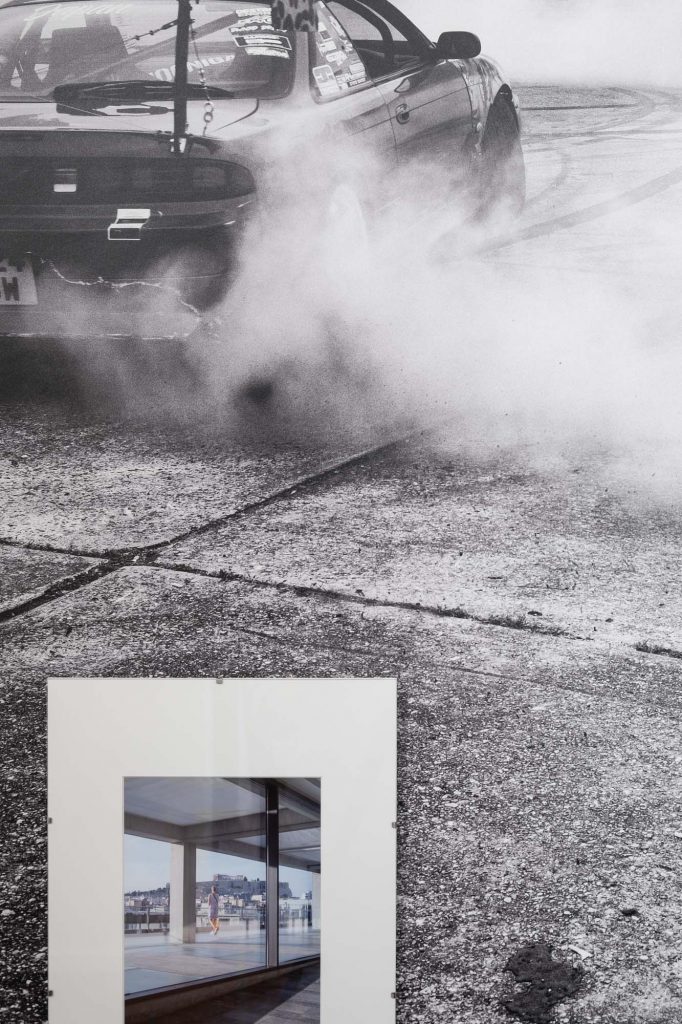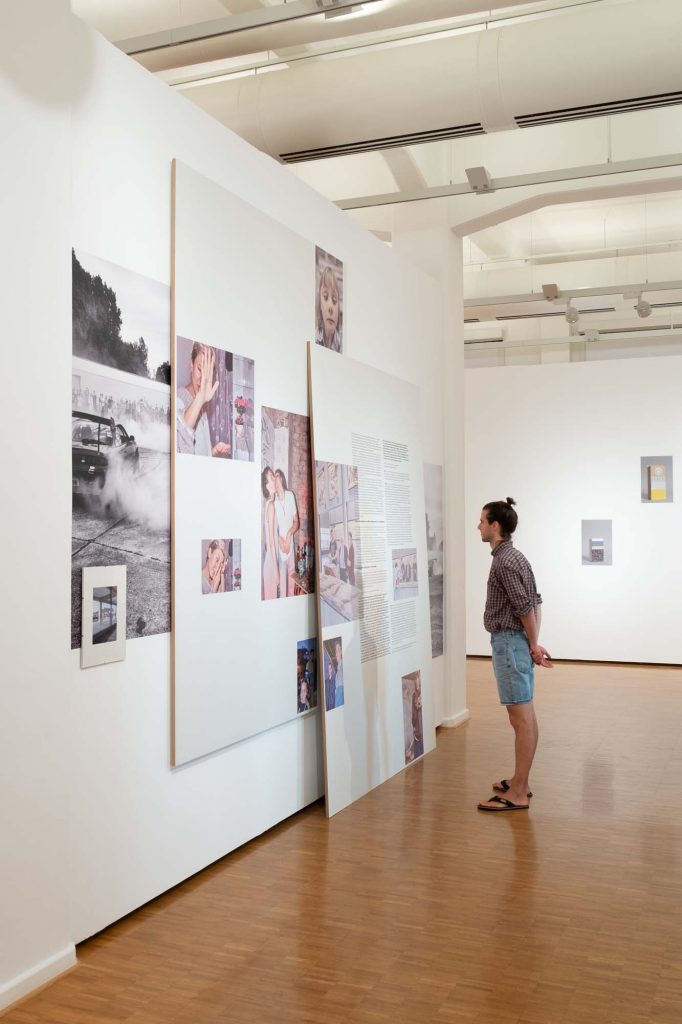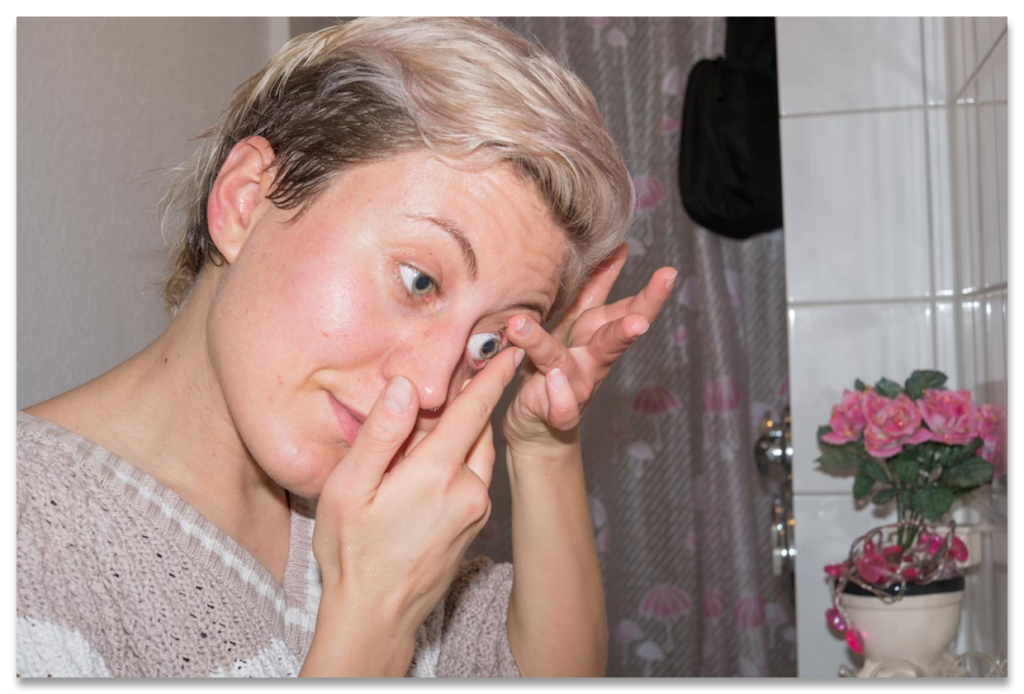funny bodies
2019 | images and text, UV directprint on 2 MDF boards, 280 x 350 cm
Die Fotos und der Text der Installation Komische Körper sind ebenso wie die einzelnen Textfragmente nur vage assoziativ miteinander Verknüpft. Sie erzählen vom adoleszenten, lauten und vulgären Sexappeal der Straße und dem Unternehmen seiner Sterilisation durch die konservative Kraft des Museums.
Auf den Bildtafeln treten diese bieden Pole in einen Metadialog in dem sie sich gleichsam lächerlich sowie als Antagonisten kredibel machen. Die Bilder bilden ein Satellitensystem, welches behutsam in den Raum des Betrachters eindringt und ihn als Teil der metabolischen Komödie markiert.
Der erste Teil des Textes beschreibt die beiden sehr unterschiedlichen Erfahrungen auf dem Athener Parthenon einerseits und seiner musealen Konservierung im Akropolismuseum andererseits. Kommt das Unbehagen im Museum von der Beschaffenheit des Raums oder ist es nur der Kater vom Ouzo am Vorabend? Der zweite Teil skizziert einen surrealen Raum in einem Traum. Auch dieser Raum gilt der Haltbarmachung er ist aber, im schroffen Gegensatz zum vorher beschriebenen, hyper-harmonisch. Allerdings ist er vollkommen leer, abgesehen von drei Menschen, die auf einer Seite des Raumes sitzen und deren Gespräch im dritten Teil niedergeschrieben ist. Die drei sprechen über die Karte als trockenes Abbild einer feuchten Welt. Sie sprechen jedoch nicht miteinander, sondern nacheinander. Irgendetwas stört ihr Gespräch.
Der titelgebende Komische Körper ist der Körper im Affekt, motorisch unentschieden, inmitten der Erneuerung, außerhalb kinetischer Kulminationspunkte. Der komische Körper erzählt nicht wie sein tragisches Pendant vom bewegten Gemüt, sondern vom (gemüts-) bewegten Körper. Diese beiden Modi der Repräsentation von Bewegung finden wir bei Deleuze, wenn er Bergsons Thesen zur Bewegung rekapituliert [1]. Demzufolge muss der Begriff die Bewegung zerteilen, um sie zu fassen. Die Antike und die Moderne unterscheiden sich durch zwei grundlegend unterschiedene Methoden dieser Teilung und beiden Wahrnehmungsmodi entgeht dabei die eigentliche Bewegung, unabhängig davon, ob nun die Bewegung wie in der Antike in wesentliche, heterogene Posen, oder wie in der Moderne in beliebige homogene Schnitte unterteilt wird. Wirkliche Bewegung ist kontinuierlich und rekonstruierte Bewegung ist immer diskret. Literarische Bewegung ist also immer falsche Bewegung und der tragische Körper unterscheidet sich von seinem komischen Gegenstück erst dadurch, dass er seine Bewegung vertikal organisiert, als fixiertes Verhältnis von Text und Kontext, anstatt als horizontale Sukzession homogener Texte.
Für den Fotografen ergeben sich daraus zwei sehr unterschiedliche Handlungsoptionen. Entweder geht er mit einer bereits sterilisierten Idee schwanger, die er im fotografischen Bild zu konservieren sucht oder aber er baut auf seine Intuition und ist bereit sich vom Bild überrumpeln zu lassen. Kritik ist dann nicht mehr bloß intellektuelles Spielzeug, sondern intuitiver Bestandteil der fotografischen und auch literarischen Praxis und ihr Platz ist da, wo was los ist. Hier harrt der Fotograf aus. Hier riskiert er die Konfrontation seiner tragischen Vorurteile mit der Komödie der Straße, lässt sich locken, führt den Sucher ans Auge und… drückt auf den Knopf.
The photos and the text of the installation Komische Körper, as well as the individual text fragments, are only vaguely associated with each other. They tell of the adolescent, loud and vulgar sex appeal of the street and the enterprise of its sterilization by the conservative power of the museum.
On the panels, these bland poles enter into a meta-dialogue in which they make themselves both ridiculous and credible as antagonists. The images form a satellite system that carefully penetrates the space of the viewer and marks him as part of the metabolic comedy.
The first part of the text describes the two very different experiences at the Athens Parthenon on the one hand and its museum conservation in the Acropolis Museum on the other. Is the discomfort in the museum caused by the nature of the room or is it just the hangover from the ouzo the night before? The second part sketches a surreal room in a dream. This room, too, is intended to be preserved, but in stark contrast to the one described above, it is hyper-harmonic. However, it is completely empty, except for three people sitting on one side of the room, whose conversation is written down in the third part. The three speak about the map as a dry image of a wet world. However, they do not speak to each other, but one after the other. Something disturbs their conversation.
The comic body that gives the title is the body in affect, motor undecided, in the middle of renewal, outside kinetic culmination points. The comic body does not, like its tragic counterpart, tell of the moving mind, but of the (emotionally) moving body. We find these two modes of representation of movement in Deleuze’s recapitulation of Bergson’s theses on movement [1]. Accordingly, the concept must divide movement in order to grasp it. Antiquity and modernity differ in two fundamentally different methods of this division, and both modes of perception miss the actual movement, regardless of whether the movement is divided into essential, heterogeneous poses, as in antiquity, or into arbitrary homogeneous sections, as in modernity. Real movement is continuous and reconstructed movement is always discrete. Literary movement is thus always false movement, and the tragic body differs from its comic counterpart only in that it organizes its movement vertically, as a fixed relationship between text and context, rather than as a horizontal succession of homogeneous texts.
For the photographer this results in two very different options for action. Either he goes pregnant with an already sterilized idea, which he seeks to conserve in the photographic image, or he builds on his intuition and is ready to let the image take him by surprise. Criticism is then no longer just an intellectual toy, but an intuitive component of photographic and also literary practice, and its place is where the action is. This is where the photographer perseveres. Here he risks the confrontation of his tragic prejudices with the comedy of the street, allows himself to be lured, leads the viewfinder to the eye and… presses the button.
[1] Bergson, Henri: Materie und Gedächtnis . Hamburg: Meiner, 1991.


















